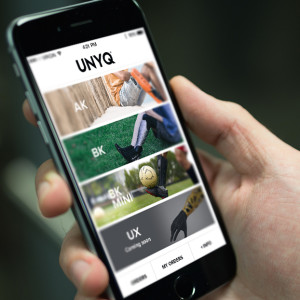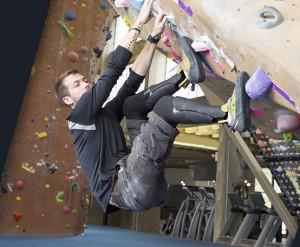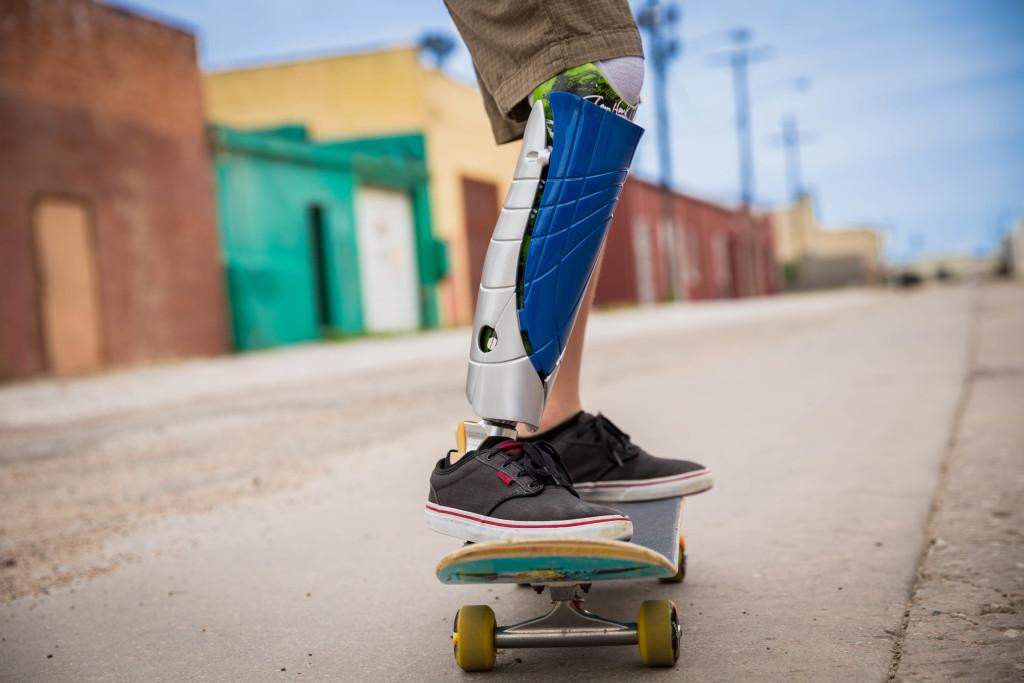 Sadly, many American veterans return from war with severe injuries, as well as “invisible” conditions like PTSD. Add to that disconcertingly high rates of veteran unemployment and suicide, and it’s easy to despair over the current welfare of veterans in the US. It’s not all bad, though. Health care for veterans has been slowly but steadily improving after years of bureaucratic messes, and technology has created options that allow even severely wounded soldiers to return to normalcy.
Sadly, many American veterans return from war with severe injuries, as well as “invisible” conditions like PTSD. Add to that disconcertingly high rates of veteran unemployment and suicide, and it’s easy to despair over the current welfare of veterans in the US. It’s not all bad, though. Health care for veterans has been slowly but steadily improving after years of bureaucratic messes, and technology has created options that allow even severely wounded soldiers to return to normalcy.
We’ve written about UNYQ multiple times; the prosthetics company has been a godsend for people who have lost limbs due to accidents or illness. A large part of their clientele consists of veterans who are coming back from Iraq or Afghanistan with missing arms or legs plus a lot of emotional damage, and UNYQ treats both. Their 3D printed prosthetic leg covers are fully customizable and incredibly easy to design – all the patient needs to do is snap a few pictures with a smartphone app, choose colors and designs, and UNYQ will design a prosthetic cover, or fairing, that fits perfectly and looks stylish.
“What the industry has produced so far has been cold and clinical, which greatly impacts how amputees feel about themselves,” says Tarun Wadhwa of SingularityHUB.
What UNYQ does allows veterans to “participate in the creative process of making their own prosthetic limbs by choosing the color, design, and materials.” And that’s as much a part of healing as the actual physical recovery is. Accepting a new limb is a lot easier when you have control over what it looks like and can make it as personalized as a tattoo.
3D printing hasn’t just improved the aesthetics of prosthetic devices, though. Specialists have produced prosthetic devices that incorporate sensors, microprocessors and other smart technology that can be customized to each patient and his or her lifestyle. Not only can these patients walk again, but they can run marathons, play hockey, climb mountains, and more.
“Taken as a whole, this marks a fundamental shift in the way treatment is done from disability management to something more like a sports medicine model, where patients are treated like professional athletes,” says Wadhwa. “…It’s the patients who are setting the terms of their care—they are showing the industry how far it can go by shattering the limits of what they were ‘supposed’ to be able to do.”
 Last year, UNYQ worked with Walter Reed Bethesda and Medical Center Orthotics & Prosthetics to test out a new version of prosthetic leg cover that could hold up under strenuous conditions. Eventually, the fairings will be equipped with smart technology that can collect and transmit information about length of use, type of use and any issues that need correction. We’ve come a long way in a short time; not long ago, prosthetic legs were usually little more than metal rods that allowed amputees to stand upright and hobble along, but not do much more.
Last year, UNYQ worked with Walter Reed Bethesda and Medical Center Orthotics & Prosthetics to test out a new version of prosthetic leg cover that could hold up under strenuous conditions. Eventually, the fairings will be equipped with smart technology that can collect and transmit information about length of use, type of use and any issues that need correction. We’ve come a long way in a short time; not long ago, prosthetic legs were usually little more than metal rods that allowed amputees to stand upright and hobble along, but not do much more.
Technological developments like these are especially critical for military service members, who are by nature highly active and athletic. Many instances of depression and suicide in veterans have been related to the loss of a limb and subsequent inability to do what they loved to do before. The feeling of being broken, useless or “on the shelf” is a serious threat to mental health, so fully functional prosthetics like those produced by UNYQ and Walter Reed do more than just replace missing limbs – they also save lives. Discuss in the 3D Printed Prosthetics for Veterans forum over at 3DPB.com.
Subscribe to Our Email Newsletter
Stay up-to-date on all the latest news from the 3D printing industry and receive information and offers from third party vendors.
You May Also Like
NSF Awards Kentucky $1M for Advanced Manufacturing
The National Science Foundation has awarded a $1 million grant to the University of Louisville for the Advancing Manufacturing and Building Construction Technologies (NSF AMT) project. This initiative is part...
3D Printing News Briefs, May 11, 2024: 3D Printed Stent, Tower, Sculptures, & More
We’re starting off with medical research in today’s 3D Printing News Briefs, as researchers in Korea used CT images and 3D printing to fabricate an educational simulator for a mastoidectomy....
3D Printing Unpeeled: Wind Turbines, Probiotics and Lenses
TPI Composites, ORNL and Ingersoll Rand are working to make wind turbine tooling segments that can be 18.3 meters long. These elements also include resistive wires that help keep the...
Tethon 3D Releases Cost-effective Bioprinter
Tethon 3D, known for its ceramic-loaded DLP materials, custom resins, and DLP 3D printers, has recently released a bioprinter. Vat polymerization printers like DLP systems have been widely used by...

































